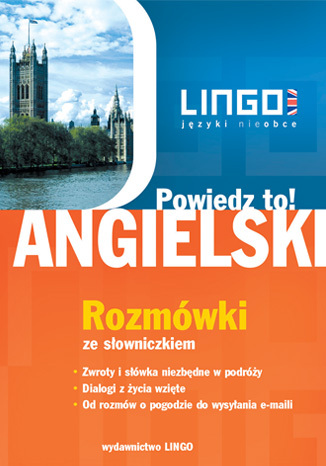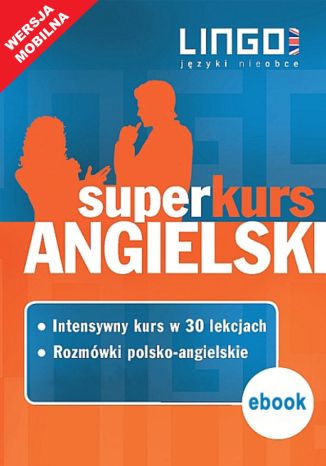Категорії
Електронні книги
-
Бізнес та економіка
- Біткойн
- Ділова жінка
- Коучинг
- Контроль
- Електронний бізнес
- Економіка
- Фінанси
- Фондова біржа та інвестиції
- Особисті компетенції
- Комп'ютер в офісі
- Комунікація та переговори
- Малий бізнес
- Маркетинг
- Мотивація
- Мультимедійне навчання
- Нерухомість
- Переконання та НЛП
- Податки
- Соціальна політика
- Порадники
- Презентації
- Лідерство
- Зв'язки з громадськістю
- Звіти, аналізи
- Секрет
- Соціальні засоби комунікації
- Продаж
- Стартап
- Ваша кар'єра
- Управління
- Управління проектами
- Людські ресурси (HR)
-
Для дітей
-
Для молоді
-
Освіта
-
Енциклопедії, словники
-
Електронна преса
- Architektura i wnętrza
- Безпека життєдіяльності
- Biznes i Ekonomia
- Будинок та сад
- Електронний бізнес
- Ekonomia i finanse
- Езотерика
- Фінанси
- Особисті фінанси
- Бізнес
- Фотографія
- Інформатика
- Відділ кадрів та оплата праці
- Для жінок
- Комп'ютери, Excel
- Бухгалтерія
- Культура та література
- Наукові та академічні
- Охорона навколишнього середовища
- Впливові
- Освіта
- Податки
- Подорожі
- Психологія
- Релігія
- Сільське господарство
- Ринок книг і преси
- Транспорт та спедиція
- Здоров'я та краса
-
Історія
-
Інформатика
- Офісні застосунки
- Бази даних
- Біоінформатика
- Бізнес ІТ
- CAD/CAM
- Digital Lifestyle
- DTP
- Електроніка
- Цифрова фотографія
- Комп'ютерна графіка
- Ігри
- Хакування
- Hardware
- IT w ekonomii
- Наукові пакети
- Шкільні підручники
- Основи комп'ютера
- Програмування
- Мобільне програмування
- Інтернет-сервери
- Комп'ютерні мережі
- Стартап
- Операційні системи
- Штучний інтелект
- Технологія для дітей
- Вебмайстерність
-
Інше
-
Іноземні мови
-
Культура та мистецтво
-
Шкільні читанки
-
Література
- Антології
- Балада
- Біографії та автобіографії
- Для дорослих
- Драми
- Журнали, щоденники, листи
- Епос, епопея
- Нарис
- Наукова фантастика та фантастика
- Фельєтони
- Художня література
- Гумор, сатира
- Інше
- Класичний
- Кримінальний роман
- Нехудожня література
- Художня література
- Mity i legendy
- Лауреати Нобелівської премії
- Новели
- Побутовий роман
- Okultyzm i magia
- Оповідання
- Спогади
- Подорожі
- Оповідна поезія
- Поезія
- Політика
- Науково-популярна
- Роман
- Історичний роман
- Проза
- Пригодницька
- Журналістика
- Роман-репортаж
- Romans i literatura obyczajowa
- Сенсація
- Трилер, жах
- Інтерв'ю та спогади
-
Природничі науки
-
Соціальні науки
-
Шкільні підручники
-
Науково-популярна та академічна
- Археологія
- Bibliotekoznawstwo
- Кінознавство / Теорія кіно
- Філологія
- Польська філологія
- Філософія
- Finanse i bankowość
- Географія
- Економіка
- Торгівля. Світова економіка
- Історія та археологія
- Історія мистецтва і архітектури
- Культурологія
- Мовознавство
- літературні студії
- Логістика
- Математика
- Ліки
- Гуманітарні науки
- Педагогіка
- Навчальні засоби
- Науково-популярна
- Інше
- Психологія
- Соціологія
- Театральні студії
- Богослов’я
- Економічні теорії та науки
- Transport i spedycja
- Фізичне виховання
- Zarządzanie i marketing
-
Порадники
-
Ігрові посібники
-
Професійні та спеціальні порадники
-
Юридична
- Безпека життєдіяльності
- Історія
- Дорожній кодекс. Водійські права
- Юридичні науки
- Охорона здоров'я
- Загальне, компендіум
- Академічні підручники
- Інше
- Закон про будівництво і житло
- Цивільне право
- Фінансове право
- Господарське право
- Господарське та комерційне право
- Кримінальний закон
- Кримінальне право. Кримінальні злочини. Кримінологія
- Міжнародне право
- Міжнародне та іноземне право
- Закон про охорону здоров'я
- Закон про освіту
- Податкове право
- Трудове право та законодавство про соціальне забезпечення
- Громадське, конституційне та адміністративне право
- Кодекс про шлюб і сім'ю
- Аграрне право
- Соціальне право, трудове право
- Законодавство Євросоюзу
- Промисловість
- Сільське господарство та захист навколишнього середовища
- Словники та енциклопедії
- Державні закупівлі
- Управління
-
Путівники та подорожі
- Африка
- Альбоми
- Південна Америка
- Центральна та Північна Америка
- Австралія, Нова Зеландія, Океанія
- Австрія
- Азії
- Балкани
- Близький Схід
- Болгарія
- Китай
- Хорватія
- Чеська Республіка
- Данія
- Єгипет
- Естонія
- Європа
- Франція
- Гори
- Греція
- Іспанія
- Нідерланди
- Ісландія
- Литва
- Латвія
- Mapy, Plany miast, Atlasy
- Мініпутівники
- Німеччина
- Норвегія
- Активні подорожі
- Польща
- Португалія
- Інше
- Przewodniki po hotelach i restauracjach
- Росія
- Румунія
- Словаччина
- Словенія
- Швейцарія
- Швеція
- Світ
- Туреччина
- Україна
- Угорщина
- Велика Британія
- Італія
-
Психологія
- Філософія життя
- Kompetencje psychospołeczne
- Міжособистісне спілкування
- Mindfulness
- Загальне
- Переконання та НЛП
- Академічна психологія
- Психологія душі та розуму
- Психологія праці
- Relacje i związki
- Батьківство та дитяча психологія
- Вирішення проблем
- Інтелектуальний розвиток
- Секрет
- Сексуальність
- Спокушання
- Зовнішній вигляд та імідж
- Філософія життя
-
Релігія
-
Спорт, фітнес, дієти
-
Техніка і механіка
Аудіокниги
-
Бізнес та економіка
- Біткойн
- Ділова жінка
- Коучинг
- Контроль
- Електронний бізнес
- Економіка
- Фінанси
- Фондова біржа та інвестиції
- Особисті компетенції
- Комунікація та переговори
- Малий бізнес
- Маркетинг
- Мотивація
- Нерухомість
- Переконання та НЛП
- Податки
- Соціальна політика
- Порадники
- Презентації
- Лідерство
- Зв'язки з громадськістю
- Секрет
- Соціальні засоби комунікації
- Продаж
- Стартап
- Ваша кар'єра
- Управління
- Управління проектами
- Людські ресурси (HR)
-
Для дітей
-
Для молоді
-
Освіта
-
Енциклопедії, словники
-
Електронна преса
-
Історія
-
Інформатика
-
Інше
-
Іноземні мови
-
Культура та мистецтво
-
Шкільні читанки
-
Література
- Антології
- Балада
- Біографії та автобіографії
- Для дорослих
- Драми
- Журнали, щоденники, листи
- Епос, епопея
- Нарис
- Наукова фантастика та фантастика
- Фельєтони
- Художня література
- Гумор, сатира
- Інше
- Класичний
- Кримінальний роман
- Нехудожня література
- Художня література
- Mity i legendy
- Лауреати Нобелівської премії
- Новели
- Побутовий роман
- Okultyzm i magia
- Оповідання
- Спогади
- Подорожі
- Поезія
- Політика
- Науково-популярна
- Роман
- Історичний роман
- Проза
- Пригодницька
- Журналістика
- Роман-репортаж
- Romans i literatura obyczajowa
- Сенсація
- Трилер, жах
- Інтерв'ю та спогади
-
Природничі науки
-
Соціальні науки
-
Науково-популярна та академічна
-
Порадники
-
Професійні та спеціальні порадники
-
Юридична
-
Путівники та подорожі
-
Психологія
- Філософія життя
- Міжособистісне спілкування
- Mindfulness
- Загальне
- Переконання та НЛП
- Академічна психологія
- Психологія душі та розуму
- Психологія праці
- Relacje i związki
- Батьківство та дитяча психологія
- Вирішення проблем
- Інтелектуальний розвиток
- Секрет
- Сексуальність
- Спокушання
- Зовнішній вигляд та імідж
- Філософія життя
-
Релігія
-
Спорт, фітнес, дієти
-
Техніка і механіка
Відеокурси
-
Бази даних
-
Big Data
-
Biznes, ekonomia i marketing
-
Кібербезпека
-
Data Science
-
DevOps
-
Для дітей
-
Електроніка
-
Графіка / Відео / CAX
-
Ігри
-
Microsoft Office
-
Інструменти розробки
-
Програмування
-
Особистісний розвиток
-
Комп'ютерні мережі
-
Операційні системи
-
Тестування програмного забезпечення
-
Мобільні пристрої
-
UX/UI
-
Веброзробка, Web development
-
Управління
Подкасти
Angielski. Mowa zależna i niezależna
Seria repetytoriów językowych Wydawnictwa Lingo przeznaczona jest dla wszystkich uczących się języka angielskiego, a zwłaszcza uczniów, studentów, maturzystów i osób przygotowujących się do egzaminów językowych. Repetytoria przygotowane zostały przez uznanych specjalistów-filologów i praktyków-nauczycieli, przy współpracy native speakerów. Dzięki repetytorium Lingo angielska mowa zależna i niezależna okażą się łatwe do opanowania zarówno dla początkujących, jak i zaawansowanych. W repetytorium znajdziesz: – praktyczne omówienia najważniejszych konstrukcji – informacje o czasach, interpunkcji, zasadach tworzenia poleceń, zakazów, próśb w mowie zależnej i niezależnej – ciekawe przykłady opatrzone polskim tłumaczeniem – różnorodne zestawy ćwiczeń z kluczem – test „Sprawdź się” Z repetytorium Lingo angielska mowa zależna i niezależna nie będą miały przed Tobą tajemnic!
Zapraszamy na angielskie pogaduchy! "Angielski na obcasach" to unikalny sposób na opanowanie nowoczesnego języka angielskiego dla początkujących, wiecznie początkujących, średnio zaawansowanych, i tych, co już nie raz zaczynały. Z najnowszego kursu Lingo skierowanego do dziewczyn i kobiet dowiesz się, jak rozmawiać po angielsku o facetach, zakupach, modzie, zdrowiu i innych ważnych sprawach. Po każdej lekcji znajdziesz zestaw przydatnych słówek i zwrotów, które zmieszczą się do małej lub większej torebki. Pokażemy ci gramatykę od kuchni i zaprosimy cię na fitness językowy. 288 stron Pogaduchy na każdą okazję Słówka w sam raz do torebki Fitness językowy Funkcje komunikacyjne i gramatyka Ćwiczenia i lekcje powtórkowe Informacje praktyczne, ciekawostki Żywy, współczesny język Konsultacja językowa angielskich lektorów Stylowe ilustracje i atrakcyjna szata graficzna Kurs obejmuje poziomy A2, B1 i przygotowuje do B2 według klasyfikacji ESOKJ Rady Europy.
Potrafisz posługiwać się językiem angielskim tylko w prostych sytuacjach i nie chcesz na tym poprzestać? Twoim celem jest udoskonalenie umiejętności, poszerzenie wiedzy, nabranie językowej pewności siebie i płynności? Kurs Lingo jest właśnie dla Ciebie! "Angielski na poziomie" jest kontynuacją popularnego kursu Lingo "Angielski raz a dobrze", a także świetną powtórką dla wszystkich tych, którzy mają już opanowane podstawy języka angielskiego. - Funkcje komunikacyjne i gramatyka - Ćwiczenia i lekcje powtórkowe - Informacje praktyczne, ciekawostki, słowniczek - Żywy, współczesny język - Konsultacja językowa brytyjskich lektorów uczących w Polsce i w Wielkiej Brytanii - Poziomy A2, B1 i B2 według klasyfikacji ESOKJ Rady Europy
Angielski na wesoło w trzech tomach
Angielski Przy Okazji! Pełny Angielski Tekst. 100% Tłumaczenia! Ucz się angielskiego czytając ciekawe książki, przygotowane według Metody Edukacyjnego Czytania Ilyi Franka Opis książki/treści: Najlepsze brytyjskie i amerykańskie dowcipy oraz kawały. Jest to zestaw anegdot, kawałów i dowcipów, którymi posługują się native speakerzy. Czasami krępujące, ale prawdziwe i śmieszne Dają nam pełen obraz tego, co bawi prawdziwych Brytyjczyków czy Amerykanów. Opis serii: Książki z serii Metoda Edukacyjnego Czytania Ilyi Franka służą do nauki języka angielskiego przy okazji czytania ciekawych książek w języku oryginalnym z wplecionym dosłownym polskim tłumaczeniem. Metoda polega na specjalnej adaptacji treści w taki sposób że cała zawartość książki jest podzielona na akapity. Najpierw czytamy akapit, z wplecionym polskim tłumaczeniem i niektórymi gramatycznymi i fonetycznymi wyjaśnieniami. Następnie ten sam akapit czytamy już bez tłumaczenia, w oryginalnym języku, czyli „płyniemy bez asekuracji”. Właśnie wtedy nasz mózg przyzwyczaja się do rozumienia języka obcego. Całość jest na tyle spójna, że odbiorca ma poczucie czytania książki w oryginale i przyswaja język, znajdując się w naturalnym stanie rozluźnienia i zaciekawienia treścią. U podstaw Metody leżą między innymi założenia Sugestopedii dr. G Łozanowa, a także prace Jego następców i samodzielnych lingwistów, A.Leontieva, G. Kitajgorodskiej. Seria zawiera dzieła klasyków literatury brytyjskiej i amerykańskiej i w ten sposób przybliża czytelnikowi specyfikę anglojęzycznej kultury. Język oryginału nie jest w żaden sposób uproszczony ani skrócony.
Dorota Koziarska, Alisa Mitchel Masiejczyk
Repetytorium ANGIELSKI. Phrasal Verbs przeznaczone jest dla wszystkich uczących się języka angielskiego i pragnących utrwalić tak ważny element angielskiego, jakim są czasowniki złożone. Przygotowane zostało w szczególności z myślą o uczniach, studentach i osobach przygotowujących się do egzaminów językowych. Główne zalety repetytorium ANGIELSKI. Phrasal Verbs: pierwsze na rynku repetytorium z kontekstowym SŁOWNIKIEM phrasal verbs 1000 przykładowych ZDAŃ I ZWROTÓW zaczerpniętych z żywej, współczesnej angielszczyzny ĆWICZENIA w układzie tematycznym z kluczem przejrzysty i czytelny układ oraz staranna szata graficzna.
Angielski. Phrasal verbs in Situations. Podręcznik z ćwiczeniami
Naucz się czasowników frazowych najczęściej występujących w codziennych rozmowach i tekstach pisanych, wymaganych na egzaminach FCE, CAE oraz maturalnym na poziomie rozszerzonym. Trudne do zapamiętania czasowniki o podobnym znaczeniu zostały wprowadzone według przysłówków: out, off, through, into, over, up, down, away, on, back, dzięki czemu nauka odbywa się poprzez kojarzenie znaczenia w kontekście i jest bardziej efektywna niż tradycyjne zapamiętywanie znaczeń każdego czasownika osobno. Poziom: średnio zaawansowany / zaawansowany W każdej lekcji: - prezentacja czasowników z tłumaczeniami, - ciekawa historyjka prezentująca czasowniki w kontekście. - urozmaicone ćwiczenia ułatwiające naukę i trwałe zapamiętanie zwrotów. Plik przygotowany jest w wygodnym do wydrukowania formacie A-4. Po wykonaniu ćwiczeń możesz sprawdzić swoje odpowiedzi w kluczu znajdującym się na końcu każdej lekcji. Jeżeli chcesz korzystać z kursu również w wersji audiobook, pobierz wersję e-book + mp3 z nagranymi czasownikami frazowymi i ćwiczeniami dostępną w dziale audiobook.
Zapraszamy na angielski w 30 rundach - wyzwanie dla prawdziwych mężczyzn! "Angielski pod krawatem" to unikalny sposób na opanowanie nowoczesnego języka angielskiego od mocnych podstaw, także dla tych, którzy niejedno podejście mają już za sobą. Z najnowszego kursu Lingo skierowanego do chłopaków i mężczyzn dowiesz się, jak rozmawiać po angielsku o kobietach, motoryzacji, gadżetach, sporcie i innych ważnych sprawach. Po każdej lekcji znajdziesz zestaw przydatnych słówek i zwrotów, pokażemy Ci także gramatykę po męsku i zaprosimy do siłowni językowej. - Funkcje komunikacyjne i gramatyka - Ćwiczenia i lekcje powtórkowe - Żywy, współczesny język - Konsultacja językowa angielskich lektorów Kurs obejmuje poziomy A2, B1 i przygotowuje do B2 według klasyfikacji ESOKJ Rady Europy.
Skuteczny i szybki sposób na opanowanie nowoczesnego języka angielskiego zarówno dla początkujących, jak i dla tych, co już nieraz zaczynali. Dzięki aktualnej tematyce swobodnie porozmawiasz o biznesie, internecie, czy poszukiwaniu pracy. Kurs obejmuje poziomy A1 i A2 oraz przygotowuje do B1 zgodnie z klasyfikacją Rady Europy. Ebook zawiera: 30 lekcji, w tym lekcje powtórkowe przyjazne ćwiczenia z kluczem słowniczek, tabele, ciekawostki Ebook zawiera dodatkowe materiały w formacie mp3
Angielski. Repetytorium leksykalne
Nowa seria repetytoriów Wydawnictwa Lingo przeznaczona jest dla wszystkich uczących się języka angielskiego, a zwłaszcza uczniów, studentów, maturzystów i osób przygotowujących się do egzaminów językowych. Repetytoria przygotowane zostały przez uznanych specjalistów-filologów i praktyków-nauczycieli, przy współpracy native speakerów. Wyróżnia je praktyczne podejście do nauki języka. Zgodne są z wymaganiami na egzaminach: Nowa Matura, FCE, CAE. Główne zalety książki "ANGIELSKI. Repetytorium leksykalne": Bogate i współcześnie stosowane słownictwo uporządkowane według wymaganych na egzaminach tematów Każdy rozdział opatrzony słowniczkiem Interesujące teksty sprawdzone przez native speakerów Różnorodne zestawy ćwiczeń Diagramy, krzyżówki, gry językowe zachęcające do samodzielnej pracy.
Angielski. Rozmówki. Powiedz to!
Śmiało! Powiedz to! Z rozmówek LINGO z serii "Powiedz to!" korzysta się bardzo prosto, a ich zawartość jest aktualna i sprawdzona w praktyce. Znajdziesz w nich wszystkie najpotrzebniejsze zwroty i wyrażenia od rozmów o pogodzie do wysyłania e-maili. Rozmówki "Powiedz to!" pomogą Ci kiedy: podróżujesz po Anglii, Ameryce i całym świecie, wybierasz się w interesach, szukasz pracy, rezerwujesz hotel, robisz zakupy, korzystasz z Internetu, potrzebujesz pomocy w nagłym wypadku. Tak mówią rodowici Anglicy. Nie bój się po nich powtarzać! Ebook zawiera dodatkowe materiały w formacie mp3
Nowa wersja rozmówek przygotowana specjalnie do urządzeń mobilnych - smartfonów lub tabletów pozwoli porozumieć się z po angielsku w dowolnym miejscu i czasie. Wygodny i przejrzysty e-book zawiera tematycznie ułożone słowa i zwroty, przydatne w typowych sytuacjach w podróży i na wakacjach za granicą. Z Rozmówek można też korzystać na komputerach stacjonarnych i laptopach, a także je wydrukować i używać w sposób tradycyjny. Angielski Rozmówki w podróży dostępne są również w wersji do słuchania z plikami mp3: "Angielski Rozmówki w podróży ebook + mp3"
Angielski. Rozmówki w podróży - Nowa wersja mobilna Teraz zwroty przydatne w podróży możesz mieć zawsze pod ręką. Pobierz e-booka na swoje urządzenie i korzystaj wygodnie, gdziekolwiek jesteś. Podczas zakupu wybierz odpowiedni format, właściwy dla Twojego telefonu lub czytnika. W Rozmówkach znajdziesz typowe tematy praktycznych konwersacji oraz najbardziej potrzebne słówka w sekcji Przydatne słowa. Przy każdym przykładzie znajdziesz zapis fonetyczny, pomocny przy ćwiczeniu wymowy, a w każdej sekcji tematycznej zapoznasz się również z przykładowymi dialogami i dowiesz, jak najlepiej zareagować w różnych sytuacjach. Jeżeli chcesz posłuchać przykładów, wybierz wersję do słuchania - E-book + mp3 dostępną w Audiobookach. Znajdziesz tam wszystkie zwroty wraz z nagranymi tłumaczeniami na język polski.
Angielski. Rozmówki z wymową i słowniczkiem
Mów śmiało! Z najnowszą serią rozmówek Lingo stanie się to proste i wygodne. Dzięki naszym praktycznym rozmówkom bez trudu dogadasz się wszędzie po angielsku. Rozmówki angielskie Lingo zawierają zestaw najważniejszych zwrotów obejmujących różne dziedziny życia, takie jak podróże, jedzenie, rozrywka, praca, zakupy czy nagłe wypadki. Dzięki temu rozmówki przydadzą Ci się w każdej sytuacji, zarówno podczas wakacji, wyjazdów służbowych, jak i spotkań z przyjaciółmi. Rozmówki Lingo pomogą Ci kiedy: ruszasz w świat kupujesz bilety, rezerwujesz nocleg, zwiedzasz spędzasz czas z anglojęzycznymi znajomymi szukasz pracy, podróżujesz służbowo prowadzisz interesy w kraju i za granicą potrzebujesz pomocy w nagłym wypadku Ponadto w książce znajdziesz: wymowę w wygodnym dla użytkownika zapisie fonetycznym przykładowe konwersacje tablice z najczęściej poszukiwanymi słowami i informacjami zarys gramatyki słowniczek polsko-angielski
Angielski. Słownik tematyczny to nowość przeznaczona dla wszystkich osób, które chcą uporządkować swoją znajomość leksyki angielskiej obejmującej najważniejsze dziedziny życia. To zarówno szybka ściąga do klasówki czy egzaminu dla uczniów i studentów, jak i pomoc dla wyjeżdżających za granicę. Zalety książki: podejście praktyczne i nastawienie na walor użytkowy: słownictwo z różnych sfer życia w podziale na 15 rozdziałów tematycznych słówka opatrzone wygodnym dla użytkownika uproszczonym zapisem wymowy specjalne strony dla wzrokowców z wyborem słówek z danego bloku tematycznego przedstawionym na graficznych planszach ciekawostki leksykalne i zestaw najbardziej mylących słówek (false friends)
Angielski. Słownik w obrazkach
"Angielski. Słownik w obrazkach" to nowość Lingo, a zarazem świetny sposób na zapamiętanie najważniejszych angielskich słówek dla osób uczących się oraz udających się za granicę. To doskonały pomysł na naukę dla wzrokowców! Zalety książki: doskonała w podróży najważniejsze tematy zilustrowane zdjęciami: transport, zakwaterowanie, jedzenie, zdrowie, sport i rozrywka, zdrowie praktyczny podział i łatwe wyszukiwanie słówka opatrzone wygodnym dla użytkownika uproszczonym zapisem wymowy w każdym rozdziale dodatkowy zestaw przydatnych zwrotów i atrakcyjnych zdjęć, pomocnych przy zapamiętywaniu treści oraz przykłady najbardziej mylących słówek, tzw. false friends. "Angielski. Słownik w obrazkach": oglądaj, powtarzaj, zapamiętuj!
Angielski. Superkurs (kurs + rozmówki)
Iwona Więckowska, Agnieszka Szymczak-Deptuła
Kompletny zestaw do samodzielnej nauki! Intensywny kurs w 30 lekcjach! Rozmówki polsko-angielskie! Angielski. Superkurs to pierwsze tak kompleksowe rozwiązanie dla wszystkich, którzy chcą nauczyć się języka od podstaw, a zarazem możliwie szybko móc korzystać z jego znajomości w życiu codziennym. Łączy w sobie zalety intensywnego kursu, sprawdzoną w praktyce użyteczność rozmówek, oraz wygodę i mobilność. Kurs obejmuje poziomy A1 i A2 oraz przygotowanie do B1 zgodnie z klasyfikacją Rady Europy. Ponadto zawiera: współczesne dialogi i słownictwo z tłumaczeniami, aktualna tematyka: biznes, internet, kultura, rozrywka, poszukiwanie pracy, przejrzyste objaśnienia gramatyki i ćwiczenia z kluczem, lekcje powtórkowe i ćwiczenia. Rozmówki polsko-angielskie to: 12 rozdziałów tematycznych obejmujących wszystkie najważniejsze dziedziny życia, zwroty i słówka niezbędne w podróży, pracy, interesach, natychmiastowa pomoc językowa przy zakupach, rezerwacji hotelu, zamawianiu jedzenia, przykładowe dialogi i słowniczek po każdym rozdziale. Wersja mobilna na smarftony i tablety została wzbogacona m.in. o interaktywny spis treści, hipertekstowe linki przy każdym ćwiczeniu odsyłające do klucza do ćwiczeń. Udostępnia też cały zakres typowych funkcjonalności dla formatów mobilnych (wyszukiwanie, skalowalność, zakładki) zachowując istotne dla pozycji edukacyjnej zalety szaty graficznej książki papierowej.
















